

The small pits inside a tomato are the plant’s seeds. When you slice a fruit in half, the center of it is full of juice and small seeds. It’s possible to collect them, press out the juice, dry them, and sow them again in the following year. Did you know there were a few tomato varieties that don’t have any pits at all?
These fruits are all flesh, which makes them easier to cook with.
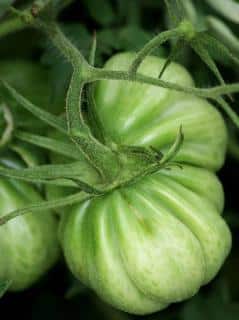 This variety bears round, ribbed fruits that are a pale yellow color. Weighing in at over 1 pound (500 g), these large fruits are between 3 and 7 inches across (8 to 15 cm).
This variety bears round, ribbed fruits that are a pale yellow color. Weighing in at over 1 pound (500 g), these large fruits are between 3 and 7 inches across (8 to 15 cm).
They only have very few pits, and their taste is soft and fruity.
The texture is very similar to that of the more famous ‘Beefsteak’. This variety is also sometimes called ‘Grosse Blanche’ and ‘White Beefsteak’.
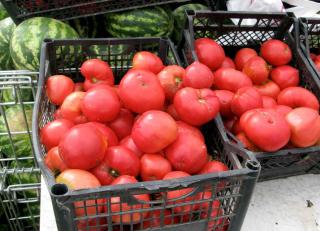 Once again, this is a roundish fruit, a bit flat towards the top and bottom, and ribbed. This time, however, fruits are a light red, slightly pinkish color. The peel is smooth and thin, and is more brightly colored when the tomato is ripe. Sometimes, the portion of the tomato nearest the stem remains a little bit green. Once the tomato is ripe, it’s soft and gives a bit when you press it. Its taste is fragrant, and it’s both juicy and sweet. Nothing more to do but devour this excellent fruit for health !
Once again, this is a roundish fruit, a bit flat towards the top and bottom, and ribbed. This time, however, fruits are a light red, slightly pinkish color. The peel is smooth and thin, and is more brightly colored when the tomato is ripe. Sometimes, the portion of the tomato nearest the stem remains a little bit green. Once the tomato is ripe, it’s soft and gives a bit when you press it. Its taste is fragrant, and it’s both juicy and sweet. Nothing more to do but devour this excellent fruit for health !
Known for its generous fruits, this tomato also has the advantage of not containing many pips. Fruits range in weight from 10 to 18 oz. (300 to 500 g), they’re round and ribbed. This disease-resistant variety boasts red skin, bordering on pink. Harvest starts in July and lasts until October, just picks the fruits as they ripen to meet your needs. This meaty tomato’s flesh is tender, fresh and tastes a bit sweet.
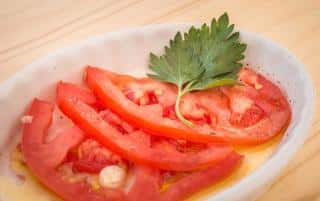 Many seedless tomato varieties tend to share a few characteristics: they’re large, and most of the flesh inside is firm and full. This gives you lots of options when it comes to cooking them! You can dice them up in a salad, or slice them evenly and spread them on a plate with mozzarella or, better still, burrata cheese. With their nice, round shape, seedless tomatoes are perfect for preparing stuffed and baked tomatoes. You’ll simply recover the extracted flesh and use it to cook sauce and syrups. As a hot side, the flavors of your tomatoes are enhanced, and will pair well with most summer dishes.
Many seedless tomato varieties tend to share a few characteristics: they’re large, and most of the flesh inside is firm and full. This gives you lots of options when it comes to cooking them! You can dice them up in a salad, or slice them evenly and spread them on a plate with mozzarella or, better still, burrata cheese. With their nice, round shape, seedless tomatoes are perfect for preparing stuffed and baked tomatoes. You’ll simply recover the extracted flesh and use it to cook sauce and syrups. As a hot side, the flavors of your tomatoes are enhanced, and will pair well with most summer dishes.
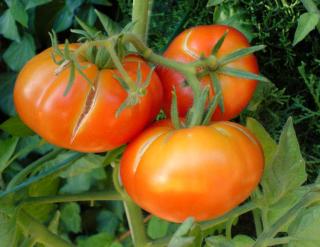 As soon as sprouts appear, place them outside in a cooler spot, but that doesn’t freeze over. This important step aims to harden them.
As soon as sprouts appear, place them outside in a cooler spot, but that doesn’t freeze over. This important step aims to harden them.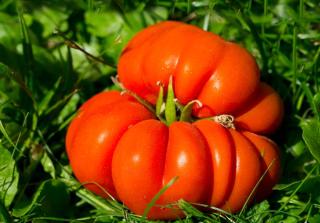 Purchase seedlings in nursery pots
Purchase seedlings in nursery pots💡 More reading → Succeed in growing tomatoes
Tomato plants require soil that stays cool, but without having the roots wallow in stagnant water. Apply a layer of mulch to retain soil moisture. Water regularly, without letting the substrate dry out before you water your seedless tomatoes again.